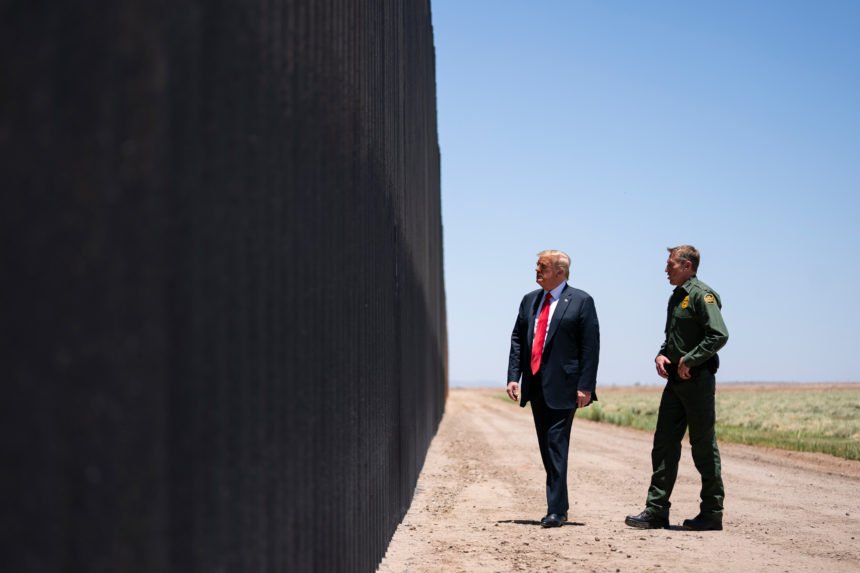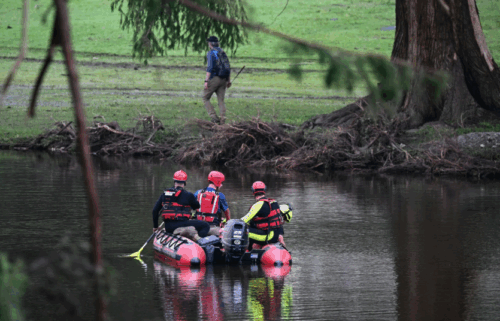Questions and answers on status of Trump’s border wall

WASHINGTON, DC -- President Donald Trump has tried to keep his promised border wall with Mexico in the public eye during his re-election bid, recently touting the completion of 300 miles of it on a trip to Yuma, Arizona.
But the wall brought Trump unwanted attention Monday when former White House adviser Steve Bannon appeared in federal court on charges that he and three associates ripped off donors to an online fundraising effort that aimed to build a privately funded barrier.
Trump has distanced himself from Bannon while claiming he knew nothing about the project and never supported it. Here are some questions and answers about where Trump stands on a signature campaign promise:
What Is the Status of the Border Wall?
The administration says it has already built 300 miles and is holding tight to the president’s promise to have 450 miles complete by the end of this year.
Nearly all construction under Trump’s watch has been to replace old and much shorter barriers with steel poles up to 30 feet high and filled with concrete. Barriers currently cover 658 miles, which is about a third of the border and little changed from when Trump took office.
Trump said repeatedly during the campaign that Mexico would pay for the wall, but that has not happened. The administration says it has received about $5 billion from congressional appropriations. In addition, Trump has moved nearly $10 billion from the Defense Department to pay for the wall, a move that has so far survived legal challenges.
Earlier this month, the Army Corps of Engineers asked private contractors for ideas on how to build water barriers made of buoys. The Rio Grande separates Texas from Mexico.
Who Built the Privately Funded Wall?
Fisher Industries, whose leader has advocated forcefully for the border wall in television appearances, built and largely funded the 3 miles of fence posts promoted by the group called We Build the Wall. In 2019, Fisher built a half-mile of steel-pole border fence on privately donated land in Sunland Park, New Mexico near of El Paso.
Fisher, based in Dickinson, North Dakota, has received about $2 billion in funding for wall contracts An analysis released in June by the Project on Government Oversight found that Fisher and Barnard Construction Co., based in Bozeman, Montana, had received the vast majority of wall contracts.
Fisher’s latest win was announced Aug. 3, a $290 million deal to build 17 miles of barrier in the Border Patrol’s Laredo, Texas, sector.
What Is the History of the Group Called We Build the Wall?
Brian Kolfage founded We Build the Wall in December 2018 as Congress battled over funding the wall. The former airman, a triple amputee who was severely wounded in Iraq, wrote on a GoFundMe page that he viewed the southern border as a national security threat. “I refuse to allow our broken political system to leave my family and my country vulnerable to attack,” he said.
Kolfage wrote on his website that he planned to build 100 miles of 18-foot steel fencing.
Bannon, former Kansas Secretary of State Kris Kobach and Erik Prince, founder of the controversial security firm Blackwater, are notable members of the organization. Former Major League Baseball pitcher Curt Schilling and former Milwaukee County Sheriff David Alexander Clarke Jr. are also on board.
By mid-January, the account had raised over $20 million (with a $1 billion goal) from about 325,000 donors, some who gave as little as $10. However, GoFundMe eventually refunded $6 million to some of those donors when Kolfage shifted the fundraiser to an official nonprofit called We Build the Wall Inc.
The group moved quickly. By May 2019, it had cleared hurdles to begin building a half-mile stretch of border wall in Sunland Park on the border with Juarez, Mexico.
In January, the group built a 3-mile stretch of fencing just 35 feet from the Rio Grande on private land in south Texas.
Within a few months, the International Boundary and Water Commission found that the wall violated water treaty obligations with Mexico and warned that it could worsen flooding in that area. Officials called on the group to make changes to the project.
The fence is much closer to the riverbank than other stretches of border wall built by the government, which builds farther away because the U.S. and Mexico have agreed to share water and electricity generated by the river. Significant construction in the floodplain could change the flow of water and potentially damage communities on either side.
In its letter, the commission drew some of the same conclusions as opponents of the project, saying that installing posts so close to the river could catch debris and deflect water flow in a way that would worsen flooding in a storm.

